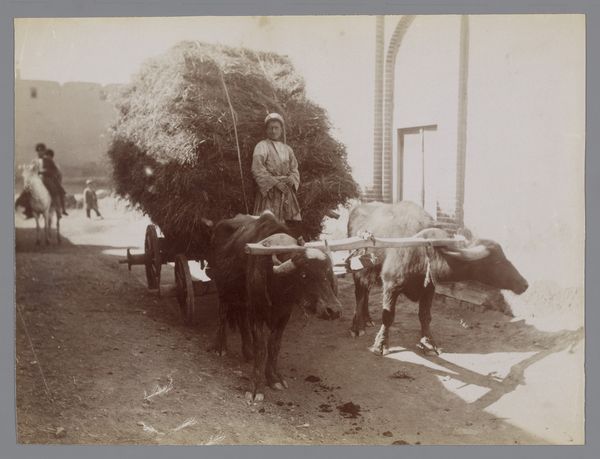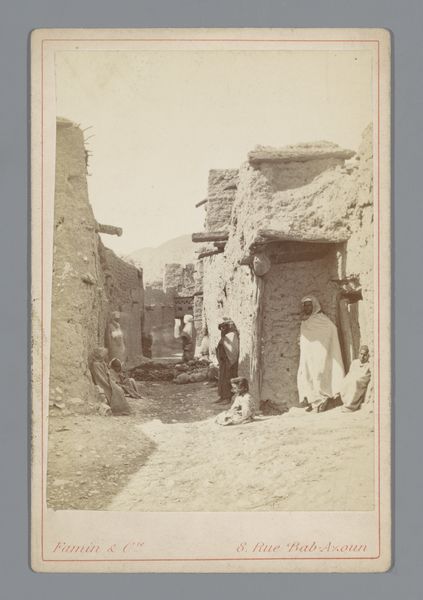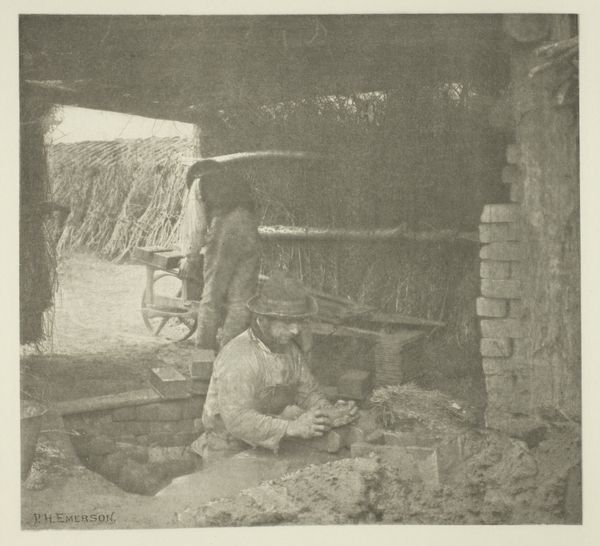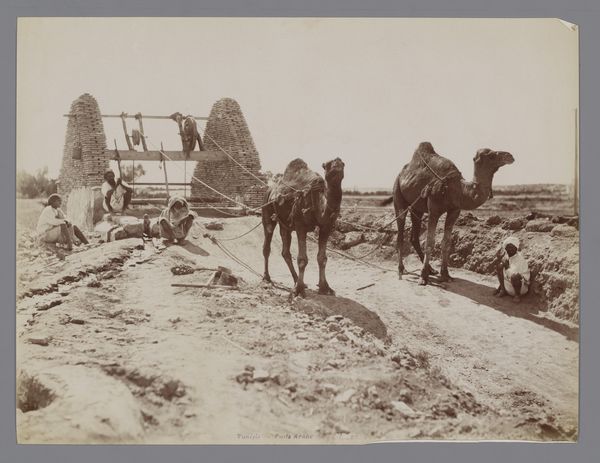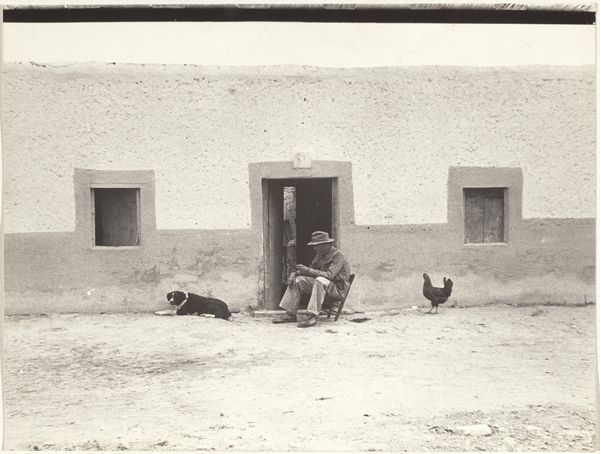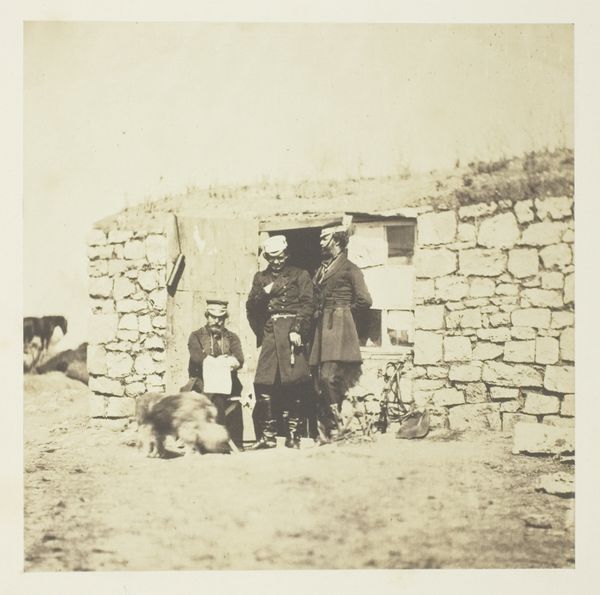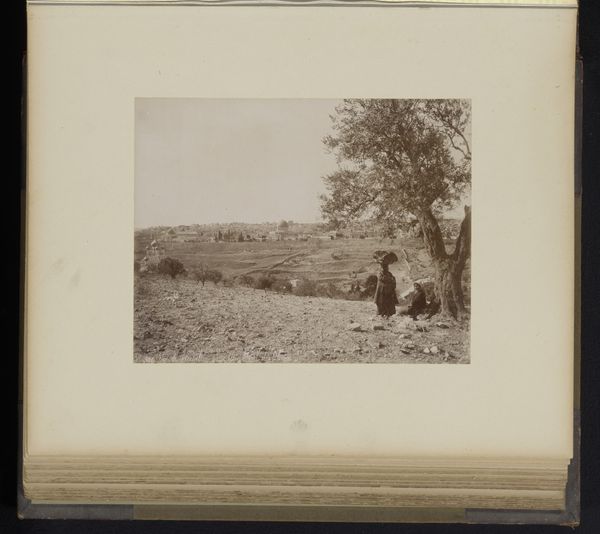
photography
#
portrait
#
landscape
#
photography
#
realism
Dimensions: height 63 mm, width 105 mm
Copyright: Rijks Museum: Open Domain
Curator: This is a striking photograph, probably dating between 1882 and 1920, titled "Man zittend voor een muur met naast hem een aantal varkens". Editor: It certainly is! My first impression is of stillness and quiet dignity. The texture is remarkable; the rough wall behind the man juxtaposes nicely with the soft, slumbering pigs. It feels very grounded, very present. Curator: It's a slice of life captured with a deliberate simplicity. The Realist approach here invites us to consider the subject—this anonymous man—within the social and economic structures of his time. Editor: Absolutely, and those symbols create a visual language that speaks to cycles of life. The pigs, traditionally associated with sustenance and even prosperity, lie calmly, embodying a self-contained world of needs met, which is further highlighted by the stoic man’s steady gaze. Curator: Indeed. We might analyze how representations of rural labor evolved within the era's social movements, too. There is a whole visual rhetoric happening in this photograph. How does it reinforce or challenge conventional representations of the working class? Editor: Look closer, and we note how his bicycle suggests access beyond the pastoral confines around him. It introduces modernity—trade, movement, aspiration—creating a subtle but vital narrative complexity, suggesting an openness and even possibilities despite limitations. Curator: Good point. Perhaps, despite the seemingly immutable tableau of man, wall, and livestock, the picture offers hints toward socioeconomic transformations, if we consider the relationship between class, mobility, and that very humble landscape. Editor: Yes! This reading reframes my interpretation and strengthens the picture’s visual narrative! It speaks to history—that single bicycle challenges any romantic reading. I think viewers can bring all these various aspects of class, gender and society to how they experience this photo today. Curator: Exactly! Hopefully that invites audiences to ask further questions. What did daily life truly entail for workers of that era, and what power structures shaped the representation of those experiences? Editor: And beyond—what visual symbols do we use today to signify our daily routines or socioeconomic positions? It prompts a conversation connecting the past with the now. It really makes me see it from a whole different lens! Curator: Precisely! I like the photo more with this reframing. Editor: Me too!
Comments
No comments
Be the first to comment and join the conversation on the ultimate creative platform.

